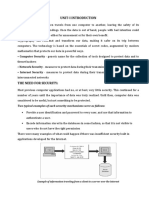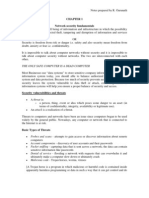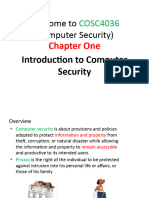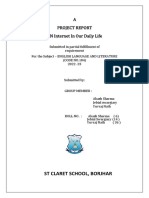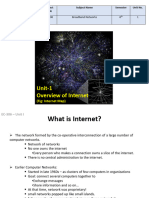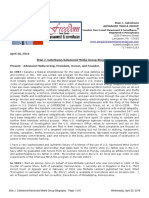0% found this document useful (0 votes)
72 views54 pagesChapter 1 Introduction To IAS
The document outlines a course on information security, covering topics such as computer threats, cryptography, network security, and security administration. It aims to equip students with the ability to understand security concepts, identify vulnerabilities, and recognize various types of attackers and attacks. Assessment methods include tests, assignments, quizzes, and a final exam, with a focus on the fundamental objectives of confidentiality, integrity, and availability in security practices.
Uploaded by
kmkkali41Copyright
© © All Rights Reserved
We take content rights seriously. If you suspect this is your content, claim it here.
Available Formats
Download as PDF, TXT or read online on Scribd
0% found this document useful (0 votes)
72 views54 pagesChapter 1 Introduction To IAS
The document outlines a course on information security, covering topics such as computer threats, cryptography, network security, and security administration. It aims to equip students with the ability to understand security concepts, identify vulnerabilities, and recognize various types of attackers and attacks. Assessment methods include tests, assignments, quizzes, and a final exam, with a focus on the fundamental objectives of confidentiality, integrity, and availability in security practices.
Uploaded by
kmkkali41Copyright
© © All Rights Reserved
We take content rights seriously. If you suspect this is your content, claim it here.
Available Formats
Download as PDF, TXT or read online on Scribd
/ 54









































